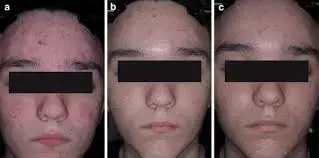- Home
- Medical news & Guidelines
- Anesthesiology
- Cardiology and CTVS
- Critical Care
- Dentistry
- Dermatology
- Diabetes and Endocrinology
- ENT
- Gastroenterology
- Medicine
- Nephrology
- Neurology
- Obstretics-Gynaecology
- Oncology
- Ophthalmology
- Orthopaedics
- Pediatrics-Neonatology
- Psychiatry
- Pulmonology
- Radiology
- Surgery
- Urology
- Laboratory Medicine
- Diet
- Nursing
- Paramedical
- Physiotherapy
- Health news
- Fact Check
- Bone Health Fact Check
- Brain Health Fact Check
- Cancer Related Fact Check
- Child Care Fact Check
- Dental and oral health fact check
- Diabetes and metabolic health fact check
- Diet and Nutrition Fact Check
- Eye and ENT Care Fact Check
- Fitness fact check
- Gut health fact check
- Heart health fact check
- Kidney health fact check
- Medical education fact check
- Men's health fact check
- Respiratory fact check
- Skin and hair care fact check
- Vaccine and Immunization fact check
- Women's health fact check
- AYUSH
- State News
- Andaman and Nicobar Islands
- Andhra Pradesh
- Arunachal Pradesh
- Assam
- Bihar
- Chandigarh
- Chattisgarh
- Dadra and Nagar Haveli
- Daman and Diu
- Delhi
- Goa
- Gujarat
- Haryana
- Himachal Pradesh
- Jammu & Kashmir
- Jharkhand
- Karnataka
- Kerala
- Ladakh
- Lakshadweep
- Madhya Pradesh
- Maharashtra
- Manipur
- Meghalaya
- Mizoram
- Nagaland
- Odisha
- Puducherry
- Punjab
- Rajasthan
- Sikkim
- Tamil Nadu
- Telangana
- Tripura
- Uttar Pradesh
- Uttrakhand
- West Bengal
- Medical Education
- Industry
For Moderate to Severe acne, CAB gel turns out to be effective treatment. Study

For Moderate to Severe acne, CAB gel turns out to be effective treatment suggests a study published in the Journal of Drugs in Dermatology.
Clindamycin phosphate 1.2%/adapalene 0.15%/benzoyl peroxide 3.1% gel (CAB) is the only fixed-dose triple-combination treatment approved for acne. This post hoc analysis assessed the impact of sex on efficacy and safety/tolerability of CAB.
Methods: In two multicenter, double-blind, phase 3 studies (NCT04214639 and NCT04214652), participants aged ≥9 years with moderate-to-severe acne were randomized (2:1) to 12 weeks of once-daily treatment with CAB or vehicle gel. Pooled data were analyzed by sex. Assessments included treatment success (≥2-grade reduction from baseline in Evaluator’s Global Severity Score and a score of 0 [clear] or 1 [almost clear]), inflammatory/noninflammatory lesion counts, Acne-Specific Quality of Life (Acne-QoL) questionnaire, treatment-emergent adverse events (TEAEs), and cutaneous safety/tolerability. Results: At week 12, treatment success rates were significantly greater with CAB versus vehicle irrespective of sex (females: 53.7% vs 23.0%; males: 43.1% vs 24.6%; P<0.05, both). CAB-treated female and male participants both experienced greater reductions from baseline versus vehicle in inflammatory (females: 77.7% vs 57.9%; males: 77.5% vs 57.1%; P<0.001, both) and noninflammatory lesions (females: 72.5% vs 45.6%; males: 72.3% vs 49.6%; P<0.001, both). Acne-QoL improvements from baseline to week 12 were significantly greater with CAB than vehicle. No significant differences in any efficacy measures between CAB-treated males and females were observed. Most TEAEs were of mild-to-moderate severity; no sex-based trends for safety/tolerability were observed. CAB demonstrated comparable efficacy, quality-of-life improvements, and safety in female and male participants with moderate-to-severe acne. As the first fixed-dose, triple-combination topical formulation, CAB represents an important new treatment for acne.
Reference:
Lain ET, Bhatia N, Kircik L, Gold LS, Harper JC, Bunick CG, Guenin E, Baldwin H, Feldman SR, Rosso JQD. Clindamycin Phosphate 1.2%/Adapalene 0.15%/Benzoyl Peroxide 3.1% Gel for Male and Female Acne: Phase 3 Analysis. J Drugs Dermatol. 2024 Oct 1;23(10):873-881. doi: 10.36849/JDD.2024.8484. PMID: 39361705.
Keywords:
For, Moderate, Severe, acne, CAB, gel, turns, effective, treatment, study, Lain ET, Bhatia N, Kircik L, Gold LS, Harper JC, Bunick CG, Guenin E, Baldwin H, Feldman SR, Rosso JQD, Journal of Drugs in Dermatology
Dr. Shravani Dali has completed her BDS from Pravara institute of medical sciences, loni. Following which she extensively worked in the healthcare sector for 2+ years. She has been actively involved in writing blogs in field of health and wellness. Currently she is pursuing her Masters of public health-health administration from Tata institute of social sciences. She can be contacted at editorial@medicaldialogues.in.


